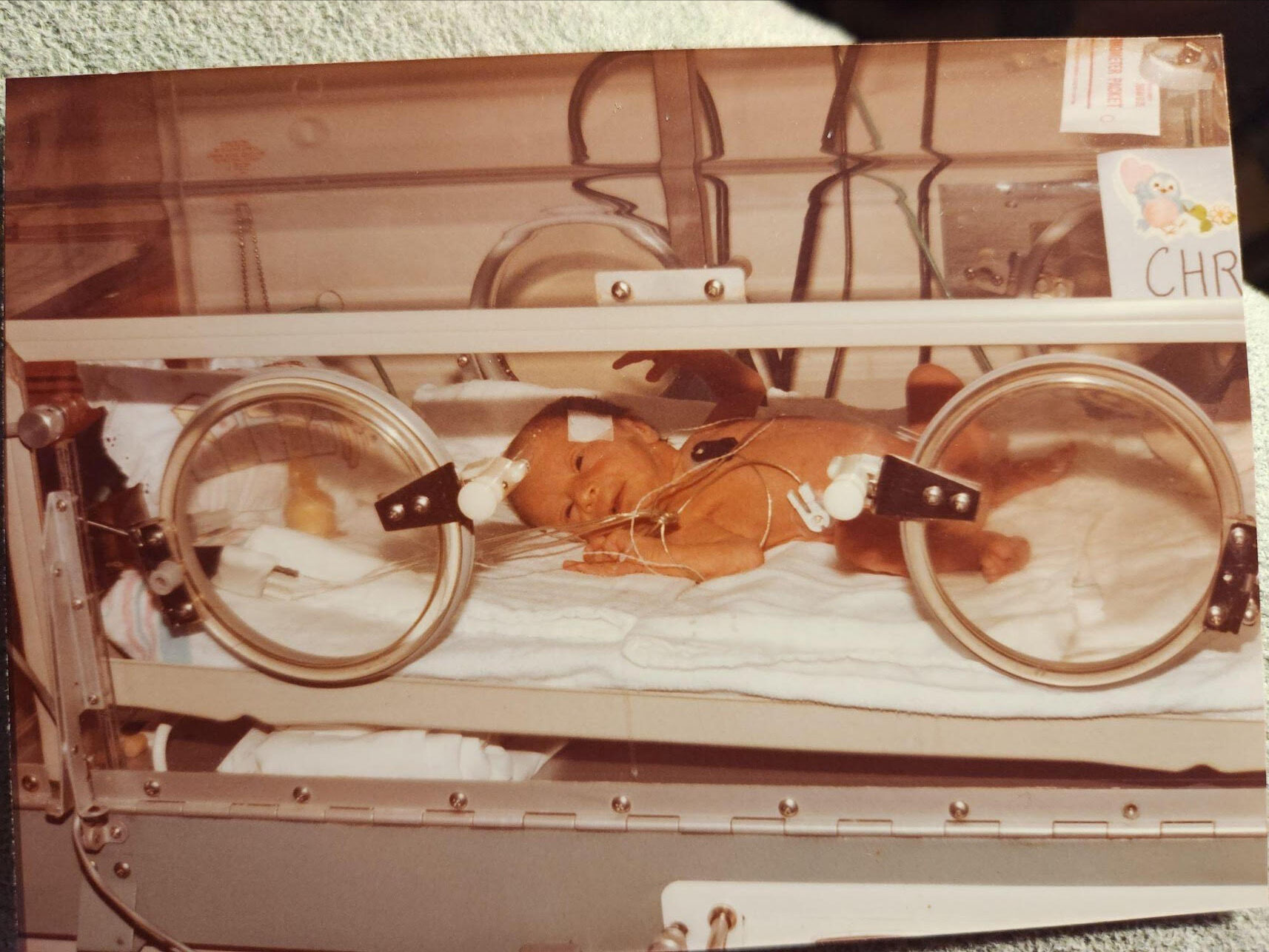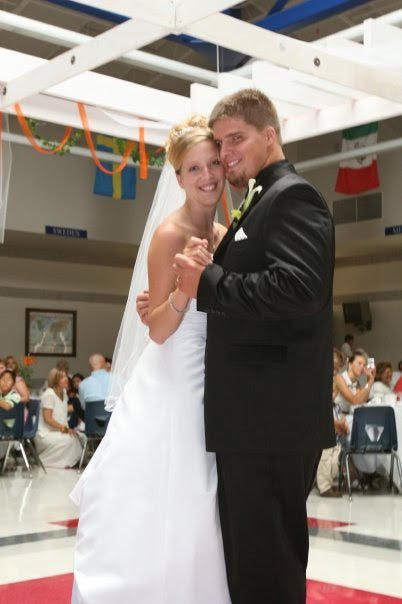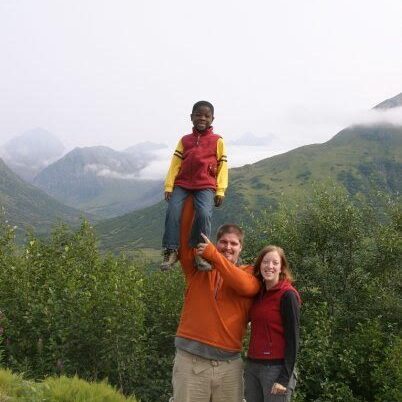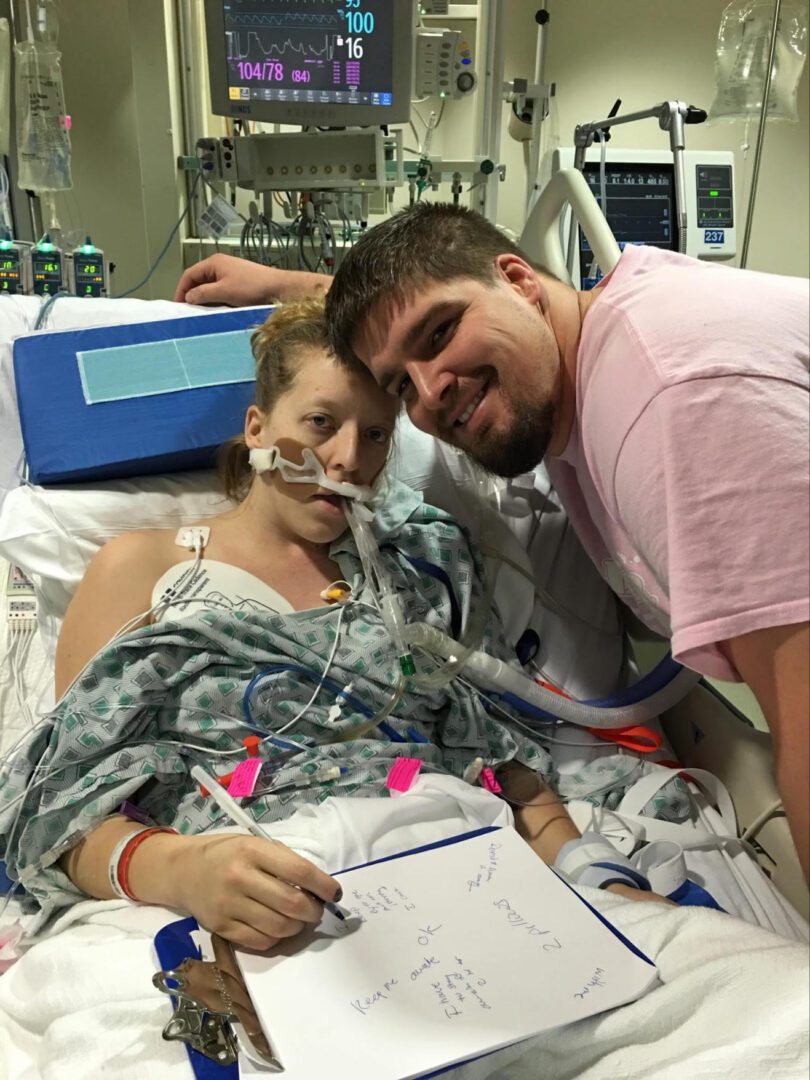Christa from Ohio

My name is Christa, I’m 38 years old and live in central Ohio.
I was born prematurely on February 2nd, weighing just 3lbs 3 1/2 oz and measuring 19 inches in length, and from the beginning, my path was set on a unique trajectory. An out-of-range result on my newborn screening test prompted further investigation, leading to the discovery of homocystinuria through a concentrated urine test at 3 months old. My mother was able to breastfeed me initially and I later began my journey on a methionine-free formula with cystine, a regimen that proved unpleasant, yet essential. I required monthly appointments in Denver, Colorado for regulation of my homocysteine and methionine levels.
When I was 18 months old, my care transitioned to the Children's Hospital in Cincinnati and then to Ohio Children’s Hospital in Columbus at age 12 through the present day. Throughout my childhood, my most notable symptom was digestive discomfort, likely attributed to the formula. The word “formula” was a word I’d shutter when hearing, as it represented the arduous battle that marked my daily routine – the confrontation with the prescribed formula. A relentless skirmish transpired after every breakfast and dinner, a true struggle, testing both my willpower and my parents' unwavering dedication to my health.
Imagine, if you will, facing a horrendous adversary in the form of a large glass of liquid that appeared innocuous yet concealed a bitter, sulphuric flavor with the texture of coarse sand water. This elixir, whose gritty texture would mockingly scrape against your teeth, demanded to be consumed, as it held the key to the necessary nutritional power my developing body craved to properly function. Yet, with each encounter, I found myself entangled in a battle of wills, desperately trying to evade its grasp, while my determined parents valiantly sought to ensure its ingestion.
To merely drink this concoction was an ordeal, for swift consumption risked triggering an involuntary gag reflex. The clump of grit within, like an ambush, would blast the back of my throat, threatening to undo all efforts. The very act of swallowing this formula became an intricate dance of caution and determination, a moment where victory was defined by distracting me enough immediately after swallowing it, to avert the reflex to expel what I had reluctantly consumed.
The consequences of this struggle extended beyond the immediate discomfort. Should I manage to retain the formula, a lingering unease would ensue, as my stomach churned for approximately 20 minutes post-consumption. The endeavor to maintain my health and manage my condition often resulted in an all-out battle of the ages every round. The formula became both a physical and emotional battleground, shaping my oppositional defiance to authority and my distaste for “healthy nutrition”, feeling that my parents’ needed to micromanage my food choices to simply prevent whatever threatening adverse reaction scare tactics the doctors had warned them against was more of a ridiculous overprotective nuisance. I had never met another individual with homocystinuria, so began to feel it couldn’t possibly be as serious as they had been dramatizing it to be, and it was simply a way they were trying to control me.
My family moved to Tokyo, Japan during my 8th grade through 10th grade school years and treatment for my homocystinuria was transferred to a specialist there. Honestly, treatment in Tokyo was so much more convenient! They individually packaged dosages of betaine to be easily kept in a lunch box and just tore open and dumped into whatever I had to drink at the time. It never was obvious to peers that I had anything different, as it just looked like I was using a water flavoring packet. So, I was more than happy to work it into my daily routine during meals and stash extra packages in my backpack, in case I was out later than expected. There I seemed to have so many more options for “normal meals” as rice was a staple for everyone, and fresh fruit & veggies were a normal staple as a side item. I simply appeared as a Vegan. I did still struggle with my formula there, though I no longer really fought to get it down. My levels were the best during that time period, which goes to show when options are available to allow children and teens to just blend in with daily norms and not be forced to stand out it not only improves their mental health, but also allows them to build a greater independence and ownership in maintaining positive control of their physical health.
When I returned back to the States in my 11th grade year, the independence and healthy routine that I had been thriving with came to a screeching halt when nothing was again convenient. I immediately felt disregarded by the medical and pharmaceutical world, now knowing there were much more accessible options elsewhere. I felt that because homocystinuria is more rare and not as lucrative of a money maker as other conditions, I was being disregarded and pretty much categorized as the dirt under the totem pole of worthwhile investments, left to nature’s survival of the fittest; natural selection of only the strongest most viable will survive. I mean, we see how quickly individuals can monitor their glucose or INR levels on the spot and are able to make immediate dietary adjustments, yet we instead must drive to the nearest lab, wait a couple of days for them to process the labs, then get our results back, and only then are finally sent diet or formula adjustment recommendation. Medication and treatment advancements have come so far for those areas because it’s a great money maker! So then for us to get access to a life-altering treatment that could significantly improve quality of life we get shafted in supply because since the demand is low, the motivation to create quality products is too. Or, a product is made and the company decides they still want to make an equal profit as if it were to sell to a high-demand market, so they just charge the individual the total difference to make up for the amount they won’t sell.
Despite dietary restrictions and watching my friends enjoy tempting treats, my resilience grew as I continued to push the line to access the options richer in flavor. It became my mission to figure out how to get flavors of the forbidden higher protein foods that my brain seemed to crave, and I happily traded peers at lunch for nibbles of their more enticing entrees. I navigated school by trying to mask my continued disappointment and frustration with having to just barely skim by in math, test-taking, and completing multi-step assignments (due to significant executive function deficits) by engaging in avoidance tactics, keeping busy with the social scene of high school, and pretending to not let it bother me. I skirted under the radar of struggling behind my peers until it was advised to my parents that if I wanted to make it through college, I should have a cognitive neuropsychological evaluation for possible learning disabilities. I underwent an evaluation, which confirmed a diagnosis of ADHD and a math learning disability. This formally opened the doors to access accommodations for extended time on tests, provided notes for classes so I could focus my attention on soaking up the lectures versus trying to split my attention with the notetaking, and allowed me to access free additional tutoring for math classes. I additionally started on ADHD medication which was a game-changer in my ability to focus in class, manage my class requirements, and complete multi-step projects.
College life was a struggle to manage my intake of medication, as I had a typical college student’s routine (or lack thereof!) I never wanted to take all my stuff that I’d need to take my formula to the food court, as it took up too much time to put together (I still lacked the executive function skills and strategies to manage my time to allow extra allotted time for my formula needs to ensure I got it in every day). My newfound freedom in college of not having to battle my parents to get down my formula and to finally have control of how I wanted to manage it won more often than that voice in the back of my head that knew I really should be getting it in. I persuaded myself that still following the low protein diet (especially with the big ticket items of no meat or high protein foods) was sufficient, and if I wanted a sprinkle of cheese for flavor or one piece of sausage on my pizza for flavor was fine because I’d just balance it out with the next meal by having a salad. My experimental dance with the balancing of meals and lack of consumption of the daily formula was a roll of the dice, and no physical symptoms were noticeable during that time. My homocysteine and methionine levels, however, were much more noticeable and elevated.
As I matured into a young adult, my homocystinuria was always on the back of my mind when dating, as at the time I had been told I’d be too high of a risk to have kids and was aware that the science at the time had indicated the average life-span of individuals with my condition was only to the age of 30-something.
I didn’t necessarily feel like I was the ideal “catch”. But I knew that part of my non-negotiables in searching for Mr. Right had to include someone open to adoption, and that would understand the potential risks involved; meaning that I may not be the person he’d get lucky to “grow old with”. My husband and I met and started dating in our senior year of high school! 5 years later, after finally marrying my Mr Right, I made sure one of the first things my husband understood was how to spot the signs of a stroke, as I knew that this was one of the serious potential risks I faced as someone with HCU. I made sure to review our plan often of what he was to do if he saw those signs.


In July 2009, we adopted a 6-year-old boy with special needs, who is now 21. As the years progressed and we battled with my son’s special needs, I continuously worried about how my husband would manage the complexities of our son’s needs by himself, if something were to happen to me.
In 2015, when my son was 12 and I was 30, that fear was tested as close to reality as I could have ever predicted. I woke up on the morning of December 26th, the day after Christmas, and jumped in the shower. I had a sharp charlie horse in the bottom of my left breast that didn’t ease up. “WEIRD”, I thought. “Maybe I slept on it wrong.”, and I continued my shower. Then I had a sudden onset of severe nausea and became sick in the shower, followed by dizziness so overwhelming that I had to sit on the floor of the bathtub. At that point, I knew that time was of the essence. I summoned my husband to get me to the car and take me to the emergency room.
At first, the medical team waived it off as a panic attack induced by holiday stress, but the doctor and his team quickly went on high alert after my EKG showed a heart attack. I coded immediately afterward, and several more times again. They informed my husband that he most likely wasn’t going to get to take me home, as they didn’t think I’d make it before they could get me transferred to a different hospital and into surgery. It turns out I had a blood clot in the lower left ventricle of the heart, or what they call “the widowmaker” (due to the severity and often difficult location it is to get in and repair). This was a result of a high homocysteine level.
The blood thinners they had put me on ended up becoming subtherapeutic, and in November 2021, caused a massive stroke due to two blockages; one in my carotid artery and another at the cross of my basal ganglia and prefrontal cortex. However, thanks to the preparation, my husband quickly identified the igns of the stroke. I had awoken in the middle of the night to let the dog out and had been stumbling around, had impaired speech, and my smile had gone completely crooked. The emergency squad was there within 15 minutes. We were told that my husband’s fast response was what got me the assistance I needed within the “golden hour” as they say, which allowed them to rush me to surgery and remove the clots in enough time to allow 90% of my damage from the stroke (as of today) to be reversed.

Today, we are officially in the process of trying to get pregnant for round #2 of our parenting journey! We’ve had to assemble a VIP team of medical professionals to craft a meticulous plan of preparation and treatment during & after the entire process. While this is an exciting time, I know that it will not be an easy journey with having to stay on blood thinners throughout the pregnancy and potentially some of my heart medications. Therefore, I am forced to give over my worries to prayer, that this medication won’t cause harm to a future baby.

My personal journey with homocystinuria, navigating my own learning challenges, and supporting my son through his own learning struggles, combined with 13 years of experience as an Intervention Specialist and 6 years in the Educational Therapy field, have shaped me into the professional I am today. These experiences empowered me to establish RootED Learning & Development Center in July 2020. At RootED Learning, I offer personalized 1:1 educational therapy, ADHD coaching, executive functioning coaching, College and career readiness guidance, and advocacy for IEP/504 plans. My services are available to individuals ages 8 to adults of all ages, both locally in central Ohio and virtually across the U.S. & Canada.
HCU Hero, October 2023
